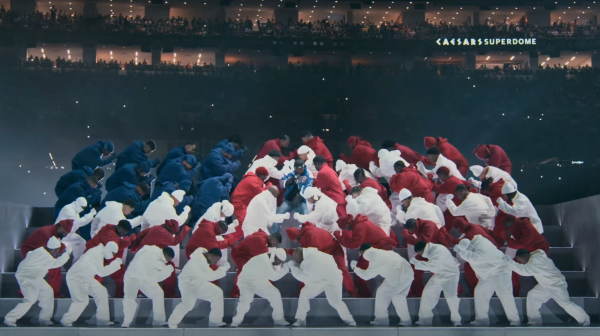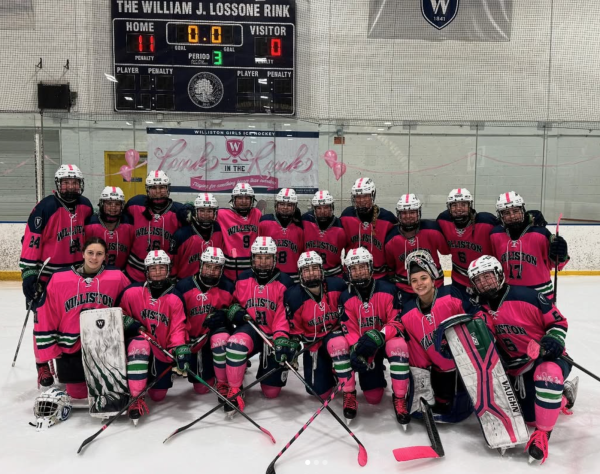What Makes a Willistonian?
What makes a Willistonian? Whether it be the beats of DJ Steve Porter or Williston’s viewbook, everyone seems to have a sense of what basic elements comprise both student and school. However, the admissions office, which singlehandedly determines the composition of the student body, offers a unique perspective on what Willistonians fundamentally are.
Ann Pickrell, Assistant Head of School and thirty-two year veteran of Williston Admissions, says, “We’re looking for a really good balance, the students here are bright, capable, interesting and involved … but after that, they’re all different.” This year, Williston has students from twenty-nine different countries represented, a testament to the cohesive whole that comprises a given set of classes.
Like our postsecondary parallel, colleges, “There’s always an art to admission work, and there’s always a science to it,” Pickrell says. Both the individual student and his unique standing in the applicant pool is taken into account, in order to facilitate a balanced class. While some elements function as prerequisites, such as academic capability and curiosity, other, more specific factors determine a student’s chances of making the cut. In order to craft the classes for which Williston is known, admissions must create a group of accepted students that is balanced with regard to interests and cultural background. “If Mr. Conroy had six kids who wanted to be quarterback,” she continues, “it probably wouldn’t work out for all of them.”
Statistically, Williston boasts decent levels of demographic diversity. 68% of upper school students are boarders, hailing from 29 different nations and many states. Division by sex is nearly even, and a variety of socio-economic backgrounds are represented.
The qualities of an individual student, in line with Williston’s mission statement, are based on Purpose, Passion, and Integrity. Aside from academics, character and curiosity are both taken into account. Chris Dietrich, Director of Admission and Financial Aid, remarks, “the next level is looking at other things they’re going to bring to the community, whether that be a passion for music or painting or basketball—passions outside the classroom are the next most important thing to think about with respect to how they’ll do in the community… We look more for passionate involvement in things as opposed to prowess.”
Finally, the student’s citizenship is evaluated, especially with respect to boarders. As many in Admissions are dorm heads themselves, the question of whether or not an applicant would be suitable for living with in a boarding atmosphere is taken carefully into account.
Williston Northampton, like almost all preparatory schools, is not needs-blind. Though efforts to accommodate every student are made, when the final selections are made, there is a fixed budget for the allotment of financial aid. “We know that we’ll have to go into a room for three days and look at all the applicants,” says Dietrich. “We can’t take everyone, so [we ask ourselves], ‘who do we know we really want to keep and then who do we know that we have to discuss… A good sized handful [of students] become waitlisted applicants.” Also, if the current student body requires more aid, of course, priority goes to current students, limiting the budget more for new applicants, as happened with the recession of 2008.
Recruitment, or outreach, occurs at Williston, including but not limited to hockey, football, basketball and lacrosse. However, this is not to say that Williston coaches spend all their time going out, looking at schools and students, and trying to get them to come here. More often, the reverse is true. It is more of a natural process when admissions officers connect with students than an actual recruitment drive. Mr. Dietrich says, “It’s more a conversation with those families as they’re approaching us, because they’re interested in the school, but part of their interest is that extracurricular interest that they’ve been involved with.”
Though not as drastically as one might expect, Williston admission policies have changed over the years. Competition has naturally increased over the years as applicants increase and knowledge of independent schools such as Williston expands. Ann Pickrell says, “The school is much more well-known not only locally but internationally and we have more international students at Williston now.” Because of this increase in public knowledge, Williston’s cultural diversity has risen drastically, well over the levels present from its 1841 origins to its 1971 merger.
While some aspects are in accordance with the emergence of the digital age, such as electronic applications and the involvement of the internet, others are comfortably placed within the boundaries of tradition. “The thing that hasn’t changed is that people hear about the school through word of mouth,” Ms. Pickrell says. “You ask people, ‘what is a great car to drive?’ You ask people ‘what is a great school?’” The answer, of course, for us, is Williston Northampton.







